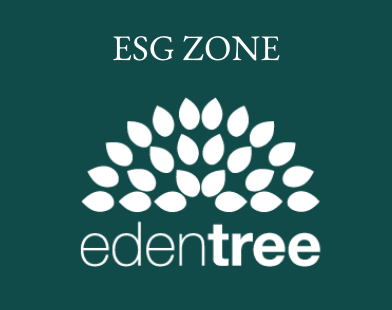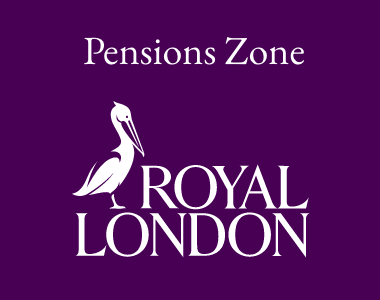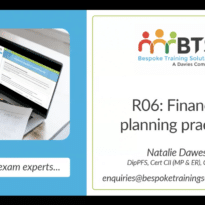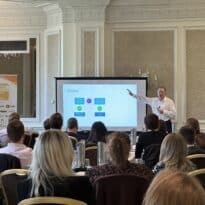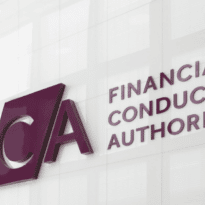The M&G Wealth technical team look at the pros and cons of effecting a partial Defined Benefit to Defined Contribution transfer.
In many cases it is not appropriate to do a Defined Benefit to Defined Contribution transfer, as the safeguarded benefits available in a DB scheme may be difficult to replicate in a personal pension.
A partial transfer of a DB scheme may be possible and in many ways could provide the ideal mix of secure DB benefits to provide for core retirement needs, linked with the flexible options offered by DC arrangements. Unfortunately many schemes still leave members with an ‘all or nothing’ choice.
However, there are some circumstances where it may be advantageous. The following highlights some of the advantages and disadvantages of transferring a DB scheme, these include:
An employer/scheme may offer an incentive to move from the DB scheme. This may be in the form of an enhanced transfer value. The trustees may seek to do this to reduce the liabilities of the scheme. However, even taking this enhancement into account, it is still often not appropriate to transfer and may even result in the loss of Lifetime Allowance protection.
Flexibility: a DB scheme does not offer the same flexibility as a Personal Pension scheme. For example, Income Drawdown is not an option under a DB scheme. Drawdown would give the client the ability to select and change the level of income they draw from their pension, allowing them the opportunity to change their income to meet changing income requirements and perhaps manage their tax liability by reducing liability to higher rates of tax. Under their DB scheme the scheme dictates the income being paid usually without any option to vary. However, by transferring the client would thereafter be taking on the longevity, investment and benefit payment risk which previously sat with the DB scheme.
Flexibility as to when the member wishes to take benefits, e.g. the DB scheme may have a retirement age of 65 and will not permit early retirement, other than with the scheme trustees’ or employer’s consent, and say, the client wishes to retire at age 60. Even if early retirement is allowed a significant actuarial reduction may be applied. However, it may be appropriate that alternative short term funding for early retirement (until the DB entitlement is available) should be considered.
Flexibility: Within a DB scheme the available tax free lump sum may only be able to be taken, in full, at the point the client takes the benefits from the scheme. Within a DC arrangement the client can decide to phase the payment of the tax free lump sum by only crystallising the portion of the funds required to generate the lump sum required (with associated designation to income product). This ability to take only part of the available benefits may assist in the deferment of any possible LTA charge.
There may be potential for a higher annuity through a Personal Pension (for example if the DB scheme pension provides benefits such as spouses/civil partner’s pension and the member doesn’t have a spouse/civil partner, or the spouse/civil partner already has sufficient pension provision). However, clients in this position must consider that their marital status may change in the future.
There may also be a possibility of a client accessing enhanced/impaired life annuity rates if they transfer to a Personal Pension. DB schemes do not consider health/lifestyle issues when establishing the level of income to be paid. Enhanced/impaired life annuities provide higher levels of income than standard annuities, reflecting health or lifestyle issues that may have an impact on a client’s longevity. A comparison between their DB benefits and an enhanced/impaired life annuity, which provides a rate of income that reflects a client’s medical situation, may be appropriate.
The level of death benefits provided by the DB scheme may not be reflective of the fund value of the scheme if it was transferred (this may be especially marked in deferred DB pensions where, unless there is a dependant, the scheme may only pay a small multiple of the deferred pension (for example 4/5 times deferred pension). However, consideration of alternative protection options (life cover etc.)should be undertaken before giving up the protected benefits in a DB scheme just so that death benefits are increased.
Within a DB scheme there is no control of the death benefits, these are paid in line with the scheme rules with little ability for the recipient to manage these payments. After retirement it is likely that the DB scheme will only pay dependants pensions with children and step children that are above age 23 no longer classed as dependant (barring physical or mental impairment). Within a DC scheme, the client can nominate who they would like the death benefits to be paid to. They could nominate their spouse, children or even grandchildren all to receive a share of their death benefits. Although the discretion of who will be paid death benefits usually lies with the trustees of the pension (usually required to keep the funds IHT free), if the client lets them know their wishes (via a nomination/expression of wish) they will take these into account and may reach a decision to follow the clients request. Without a nomination, the trustees are likely to pay all the death benefits to dependants. If in the unlikely event the trustees did elect to pay non-dependent children a portion of the death benefits, if there is no nomination in place, they can only pay a lump sum to non-dependants (such as independent children over the age of 23). Ensuring that clients put a nomination in place (and keep it up to date) is vital. The recipient of a DC death benefit can usually decide to take the benefits as a lump sum, use the funds to buy an annuity, or they can place the funds within a dependants/nominees (and subsequently successors) drawdown. If the beneficiaries elect flexi-access drawdown they can choose if, when, and how much they choose to draw down from these funds. Thereafter, the dependant/nominee flexi-access holder nominates who they wish the funds to be subsequently left to. So, if the funds are left solely to a spouse, there is no control over who they might leave the assets to; they may not leave funds to the original member’s bloodline and could possibly leave everything to say a new spouse, with the member’s children receiving nothing. Spousal Bypass Trusts are one way in which this issue can be addressed. Getting advice in this area is vital.
Although the tax treatment of DB and DC death benefits on death post 75 is the same, there is a significant difference when death occurs before age 75. On death before age 75 although lump sum death benefits from both DB and DC schemes and income benefits from DC schemes are tax free, income benefits from DB schemes are taxable at the recipients’ marginal rate. The tax treatment and lack of control attached to DB death benefits (as detailed above) will result in the recipient of DB income death benefits paying more tax (and perhaps a higher rate of tax) than could have been achieved within a DC scheme.
The DB scheme may be in danger of entering the Pension Protection Fund (it is very important that the implications of this and how the PPF works are fully understood.
Disadvantages include:
On transferring from a DB to DC scheme, the client will take on the investment, longevity, income management risk etc. as previously detailed. This also applies to any dependant’s benefits payable from the DB scheme.
Transferring clients may become vulnerable to various pension liberation schemes/scams.
The method of LTA calculation applied to DB schemes may result in less LTA usage than the post transfer DC scheme.
Transferring may possibly lose any LTA protection that the client may have applied/ be eligible for.
With control comes responsibilities – the client needs to ensure that they exercise sufficient self-control to manage the withdrawal options they have within a DC arrangement.
The protection of the Pension Protection Fund would be lost on transfer of a DB scheme to a DC arrangement. The PPF was established to pay compensation to members of eligible defined benefit pension schemes, when there is a qualifying insolvency event in relation to the employer and where there are insufficient assets in the pension scheme to cover Pension Protection Fund levels of compensation. The PPF provides on-going protection at a level which may provide the client with sufficient retirement benefits.
As an opted-out member of the DB scheme the client may lose out on employer contributions between transfer and retirement. They may also lose out on any additional incentives provided to active/pensioner members of the scheme (non-pension e.g. discounts, concessions, Death in Service or memberships?)



